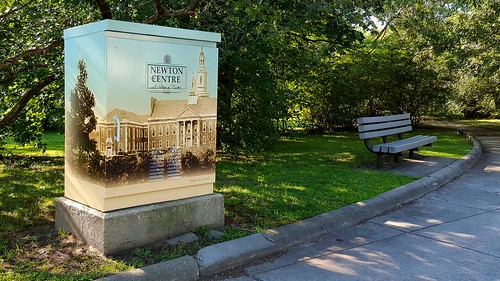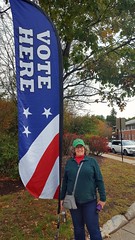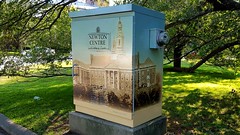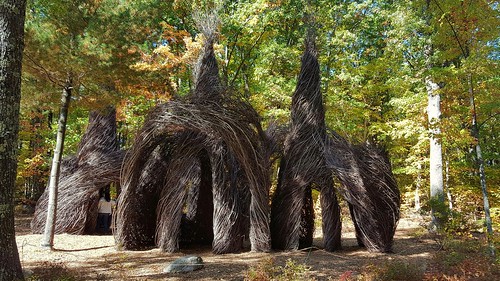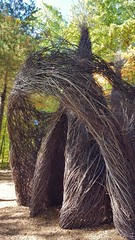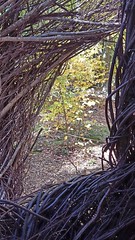When Massachusetts announced it would allow early voting this year, I wasn’t sure I wanted to take advantage of it. I like the annual ritual of walking to our local polling place after work on Election Day to vote alongside our neighbors, and I was afraid early voting would feel as impersonal as mailing in an absentee ballot.
I shouldn’t have worried. Today after lunch J and I walked to Newton City Hall to cast our early ballots, and along the way we saw a half dozen strangers sporting “I voted” stickers. One be-stickered man said hello as he and his partner passed, and his friendliness reminded me of the annual melting of New England resolve that happens on Marathon Monday. There’s something about doing your civic duty that makes even the most reticent New Englander a bit more cheery, whether that civic duty involves casting a ballot or cheering on passing runners.
At City Hall, a handful of volunteers stood outside with signs reminding us to vote yes to protect farm animals. Inside, a police officer sat quietly in a corner while a pair of election volunteers steered J and me to a check-in table where workers tapped our names into tablets, verified our address, and handed us a double-sided ballot and early-voting envelope.
There wasn’t a line to check in, but the dozen or more ballot booths lined along a nearby hallway were full. “At this rate,” an election worker told J as she applied a precinct sticker to his ballot envelope, “there won’t be anyone who hasn’t voted by election day.” Indeed, as of yesterday more than a tenth of all Newton voters had already cast their ballots, and who knows how many more voters will turnout before early voting ends on November 4th.
After I’d filled out my ballot and sealed it in its envelope, I had to wait at the ballot box while two adolescent girls in soccer uniforms politely asked the election volunteer if they could have a voting sticker even though they were clearly too young to register. The worker gave each of them two stickers: “One for this outfit, and one for your next.” Maybe in four years, these girls will be old enough to cast their own ballots, emboldened by the realization that they too can be President.
